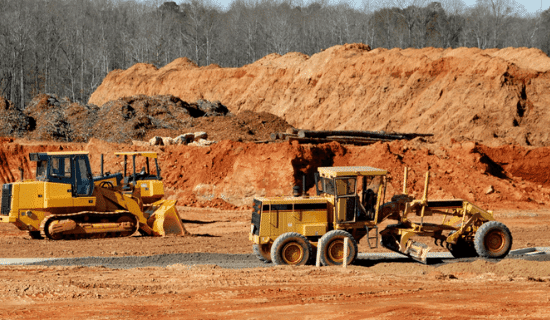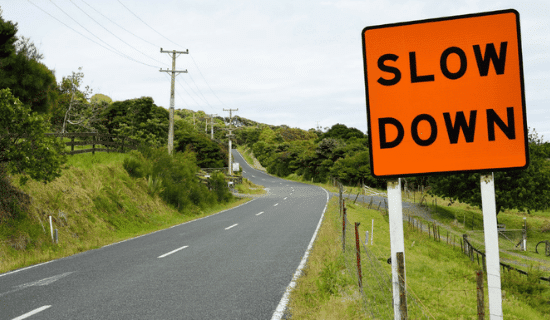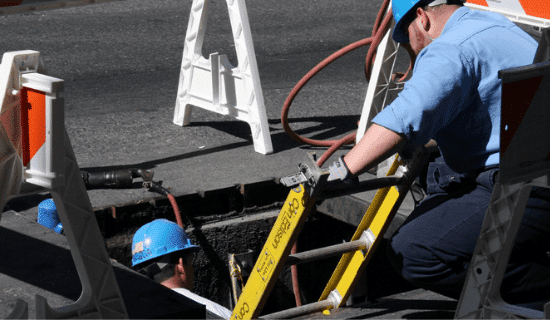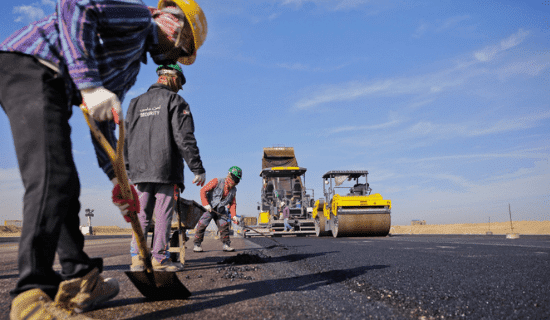Construction Zone Accidents: What Victims Should Know
Both roadways and construction sites are inherently dangerous places. Vehicles are often traveling at high rates of speed and sometimes recklessly. Meanwhile, in construction zones, there are heavy-duty trucks and equipment, large rocks, volatile materials, and other hazards. Put them together and conditions become even more unsafe. This is why construction zone accidents are such a serious problem and unfortunately, the number of reported accidents gets higher every year.
Construction zones present shifting, sometimes unpredictable driving conditions and potential obstacles that can put both drivers and workers at risk. As metropolitan areas throughout the rest of the country expand, requiring frequent updates in all types of infrastructure, there are more and more road construction projects in the works. In the state of Texas alone, with its rapidly expanding population and 80,000 miles of highways, there are about 3,000 active construction zones at any given time. With so many streets and highways under construction, the danger only increases for both drivers and construction workers.
Construction Zone Safety: Who is Responsible?
The companies in charge of construction zones are responsible for many factors that contribute to work zone safety, including proper worker training, equipment inspections, and implementation of safety precautions. For example, construction companies are responsible for posting proper signage far enough ahead of a construction area. These signs should give approaching drivers adequate warning regarding speed limit changes, lane shifts or closures, and any potential hazards they may face. Construction companies are also responsible for erecting cones, drums, and barriers, as needed, to separate construction areas from main roadways.
When a crash occurs in a construction zone, the question of who is at fault in a car accident becomes more complicated. Determining liability depends on the factors in play at the time of the accident. Was the driver distracted, impatient, speeding, under the influence of alcohol or drugs, or otherwise driving recklessly? Did weather conditions play a role in the crash, such as slick roads during a rainstorm making it difficult for the driver to steer or slow down their vehicle? Or were there problems related to the construction zone itself, perhaps due to negligence on the part of the construction company? Certain factors that fall within the realm of the contractor’s responsibility, such as inadequate lighting or a lack of proper traffic control in the construction zone, could have also contributed to the crash.
If the driver involved in the crash is found to have done something reckless or unlawful that caused the accident, they could be held liable—even if the crash occurred within a construction zone. Speeding through construction zones, ignoring posted signs, and disregarding warnings about changes in lanes or speed limit are typically found to be solely the driver’s responsibility. Also, if a driver chooses to drive on roads that have been closed off due to construction, any resulting accidents are likely to be found solely at fault of the driver. However, drivers would not be at fault if it can be proven that a lack of proper signage or barriers led them to accidentally drive onto the blocked-off roadway.
 Construction Injury Statistics
Construction Injury Statistics
There are many different types of construction, including construction zones on highways and other roadways. General construction injury statistics show that there is a disproportionately high incidence of accidents among all types of construction workers, including road workers, as compared to accidents among workers in other industries. This clearly illustrates the fact that construction zones are highly dangerous places.
This sobering reality is supported by construction injury statistics from the Center for Construction Research and Training, which show that construction workers have a 75% chance of experiencing a disabling injury at some point in their construction career. In addition, their chances of suffering a fatal injury on the job are a shocking 1 in 200.
Construction zone danger is not exclusive to workers. As a matter of fact, the risks are even greater for drivers and passengers who are traveling through work zones. According to the Texas Department of Transportation (TxDOT), there were over 25,000 crashes in construction zones across the state in 2018, which resulted in 684 serious injuries and 161 fatalities—almost all of them among drivers or passengers, rather than on-site construction workers.
 What is the Speed Limit in a Construction Zone?
What is the Speed Limit in a Construction Zone?
If you have ever been confused about how fast you can go if road work is underway, you aren’t alone. Drivers should be extra careful to heed posted speed limits when approaching or traveling through construction zones—and not just because fines are doubled for drivers caught speeding in a work zone while workers are present. Complying with the speed limit is especially important in these zones, because the consequences of not doing so can be catastrophic. According to TxDOT, speeding is the leading cause of work zone accidents across the state, along with driver inattention.
Speed limits in construction zones vary from one zone to the next, based on factors like what the original, regular speed limit was pre-construction, how far the workers and the area actively under construction are from passing lanes of traffic, what type of barrier separates traffic from the work area, and how wide the lanes are within the construction zone. Thus, the speed limit in a construction zone might be as low as 15 miles per hour or as high as 65, depending on these factors.
Note that posted speed limits on any roadway, including within work zones, represent the maximum legal speed. Drivers still must use their best judgment and common sense when driving on any roadway, and especially within a work zone. It may be necessary to travel at speeds below the maximum posted limit, and sometimes well below, in order to accommodate for traffic, weather, or unexpected hazards like potholes, rough surfaces, or abruptly shifting lanes.
 The Most Common Construction Accidents
The Most Common Construction Accidents
In an industry as dangerous as construction, there are many different types of accidents that can result in injuries and even fatalities. In general, the number-one most common construction accidents are ones resulting from workers falling from a great height, such as from ladders or scaffolding. These types of accidents account for a full third of all construction accidents.
The number of injuries and fatalities on construction sites involving vehicles and mobile heavy equipment is alarmingly high. From 2008 until 2010, more than half of all fatalities at road construction sites involved vehicles. In fact, over 400 workers lose their lives each year in these tragedies. Most of these injuries involved a construction worker on foot who was struck by a vehicle entering the work zone or by heavy equipment while on the job. Other fatal accidents involved workers getting caught in or between vehicles or mobile equipment, or deaths due to fires and explosions caused by a vehicle part.
If working during the daytime in hot summer months, workers are at risk for heat stroke and overexertion. Slip-and-fall accidents, electrocutions, being hit by a passing vehicle and impairments caused by malfunctioning equipment are also common construction site injuries. In each of these instances, there is a variety of contributing factors that make it a complicated process to determine what exactly happened and who is responsible for damages.
 Common Causes of Road Construction Accidents
Common Causes of Road Construction Accidents
Poorly maintained highways are among the most common causes of road construction accidents. If a road that is under construction has potholes, poor lighting, barriers that impede traffic flow, or other obstacles to safe driving, the contractor in charge of the construction zone has not performed due diligence. A construction zone should be clearly established, with markings and barriers to safely guide vehicles through.
Improper or inadequate signage is another common cause of road construction accidents. Drivers need an adequate warning before approaching a construction zone to be able to slow down, merge, shift lanes, look out for work trucks and workers, or otherwise navigate safely through the area of construction. When orange, diamond-shaped warning signs aren’t placed far enough ahead of the construction zone or there are too few signs to alert drivers, accidents are more likely to happen.
Since there are many potential contributing factors in construction zone accidents, they are complex cases to tackle. Deep knowledge of traffic laws and construction zone safety issues is required, along with a commitment to uncovering all contributing factors and information related to the case. Only then can a fair judgment be made and the maximum possible compensation be recovered.
Trust the Experienced Personal Injury Attorneys at Slack Davis Sanger
Any vehicle crash can be a devastating event, resulting in injuries, loss of livelihood, loss of financial resources, and even death. If you were severely injured as a result of roadway construction—whether as a driver or a passenger in a vehicle or if you’ve lost a loved one to a construction zone accident—you need a dedicated accident attorney by your side, fighting for your legal right to damages.
The determined and experienced attorneys at Slack Davis Sanger are longtime advocates for safer roadways and bring decades of experience with serious and complicated construction zone accident cases. We have advocated for safer traffic laws and stricter requirements for construction companies to make work zones safer for everyone–including construction workers, vehicle drivers, and passengers. We handle our clients’ cases with great compassion and care as we work toward justice in the form of the maximum possible compensation for their losses, injuries, pain, and suffering.
Related Articles
- Dallas Construction Accident Lawyers
- Fort Worth Construction Accident Lawyers
- Austin Construction Accident Lawyers

The firm handles cases involving catastrophic personal injuries and deaths. Our work spans three decades of handling airplane and helicopter crashes, truck and car accidents, oilfield and construction accidents, and other devastating accidents. We try lawsuits throughout the country in both federal and state courts and have recovered hundreds of millions of dollars for our clients. To date, we have handled or tried cases in 47 states, read more about our attorneys and firm.
